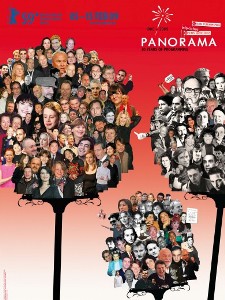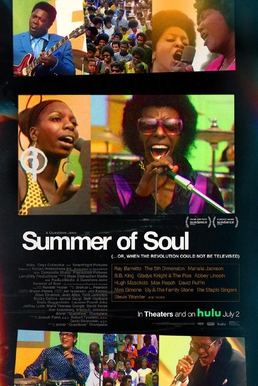
70 mm film is a wide high-resolution film gauge for motion picture photography, with a negative area nearly 3.5 times as large as the standard 35 mm motion picture film format. As used in cameras, the film is 65 mm (2.6 in) wide. For projection, the original 65 mm film is printed on 70 mm (2.8 in) film. The additional 5 mm contains the four magnetic stripes, holding six tracks of stereophonic sound. Although later 70 mm prints use digital sound encoding, the vast majority of existing and surviving 70 mm prints pre-date this technology.

Super 8 mm film is a motion-picture film format released in 1965 by Eastman Kodak as an improvement over the older "Double" or "Regular" 8 mm home movie format. The formal name for Super 8 is 8-mm Type S, distinguishing it from the older double-8 format, which is called 8-mm Type R. Unlike Super 35, the film stock used for Super 8 is not compatible with standard 8 mm film cameras.
IMAX is a proprietary system of high-resolution cameras, film formats, film projectors, and theaters known for having very large screens with a tall aspect ratio and steep stadium seating, with the 1.43:1 ratio format being available only in few selected locations.
Industrial Light & Magic (ILM) is an American motion picture visual effects, computer animation and stereo conversion digital studio that was founded on May 26, 1975 by George Lucas. It is a division of the film production company Lucasfilm, which Lucas founded, and was created when he began production on the original Star Wars, now the fourth episode of the Skywalker Saga.

The Castro Theatre is a historic movie palace in the Castro District of San Francisco, California. The venue became San Francisco Historic Landmark #100 in September 1976. Located at 429 Castro Street, it was built in 1922 with a California Churrigueresque façade that pays homage—in its great arched central window surmounted by a scrolling pediment framing a niche—to the basilica of Mission Dolores nearby. Its designer, Timothy L. Pflueger, also designed Oakland's Paramount Theater and other movie theaters in California during that period. The theater has more than 1,400 seats.

Symbiosis was a 70 mm documentary shown from October 1982 to January 1995 in the Harvest Theater at The Land pavilion at Epcot at the Walt Disney World Resort in Lake Buena Vista, Florida. It was directed by Paul Gerber and narrated by veteran voice-actor Philip L. Clarke.

Héctor Elizondo is an American character actor. He is known for playing Phillip Watters in the television series Chicago Hope (1994–2000) and Ed Alzate in the television series Last Man Standing (2011–2021). His film roles include The Taking of Pelham One Two Three (1974), American Gigolo (1980), Leviathan (1989), Pretty Woman (1990), Beverly Hills Cop III (1994), Runaway Bride (1999), The Princess Diaries (2001), and Valentine's Day (2010).
A roadshow theatrical release or reserved seat engagement is the practice of opening a film in a limited number of theaters in major cities for a specific period of time before the wide release of the film. Roadshows would generally mimic a live theatre production, with an upscale atmosphere as well as somewhat higher prices than during a wide release. They were commonly used to promote major films from the 1920s–60s and build excitement.

Panavision Inc. is an American motion picture equipment company founded in 1954 specializing in cameras and lenses, based in Woodland Hills, California. Formed by Robert Gottschalk as a small partnership to create anamorphic projection lenses during the widescreen boom in the 1950s, Panavision expanded its product lines to meet the demands of modern filmmakers. The company introduced its first products in 1954. Originally a provider of CinemaScope accessories, the company's line of anamorphic widescreen lenses soon became the industry leader. In 1972, Panavision helped revolutionize filmmaking with the lightweight Panaflex 35 mm movie camera. The company has introduced other cameras such as the Millennium XL (1999) and the digital video Genesis (2004).

Kodak EasyShare was a sub-brand of Eastman Kodak Company products identifying a consumer photography system of digital cameras, snapshot thermal printers, snapshot thermal printer docks, all-in-one inkjet printers, accessories, camera docks, software, and online print services. The brand was introduced in 2001, and discontinued in 2012, when Kodak stopped manufacturing and selling all digital cameras and photo frames.

The Seattle Cinerama Theatre is a landmark movie theater in the Belltown neighborhood of Seattle, Washington, United States. The theater opened in 1963 and was renovated in the 1990s after its acquisition by Paul Allen. The Cinerama was closed in May 2020. At the time of its 2020 closure, it was one of only three movie theaters in the world capable of showing three-panel Cinerama films. In 2023, the theater was purchased by the Seattle International Film Festival (SIFF) and reopened on December 14, 2023 as SIFF Cinema Downtown due to trademark issues with the "Cinerama" name.

Final Approach is a 1991 American thriller film.

The 59th Berlin International Film Festival was held from 5 February to 15 February 2009. The opening film of the festival was Tom Tykwer’s The International, screened out of competition. Costa-Gavras's Eden Is West served as the closing night film at the festival. The festival's jury president was the British actress Tilda Swinton.
Suzi Yoonessi is an American filmmaker. She wrote and directed the award-winning feature film Dear Lemon Lima, and directed the Duplass Brothers film Unlovable and Daphne and Velma for Warner Brothers. Yoonessi's short films No Shoulder and Dear Lemon Lima are distributed by Shorts International and Vanguard Cinema and her documentary film Vern is distributed by National Film Network and is in the permanent collection of the San Francisco Museum of Modern Art.
Jordan Dykstra is an American film music and chamber music composer and violist from Sioux City, Iowa.

Rachel Morrison is an American cinematographer and director. For her work on Mudbound (2017), Morrison became the first woman to be nominated for an Academy Award for Best Cinematography. She has twice worked with director Ryan Coogler, as cinematographer on the films Fruitvale Station (2013) and Black Panther (2018). Morrison's feature film directorial debut is the biographical sports drama The Fire Inside (2024).

Frederic Waller was an American inventor and film pioneer.

Summer of Soul is a 2021 American independent documentary film about the 1969 Harlem Cultural Festival, directed by Ahmir "Questlove" Thompson in his directorial debut. It had its world premiere at the 2021 Sundance Film Festival on January 28, 2021, where it won the Grand Jury Prize and Audience Award in the documentary categories. It had a limited theatrical release in the U.S. by Searchlight Pictures on June 25, 2021, before expanding and being released for streaming on Hulu the next weekend.













